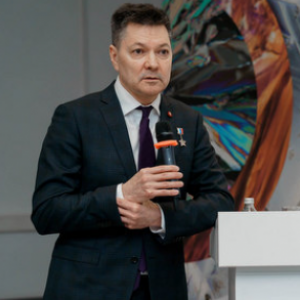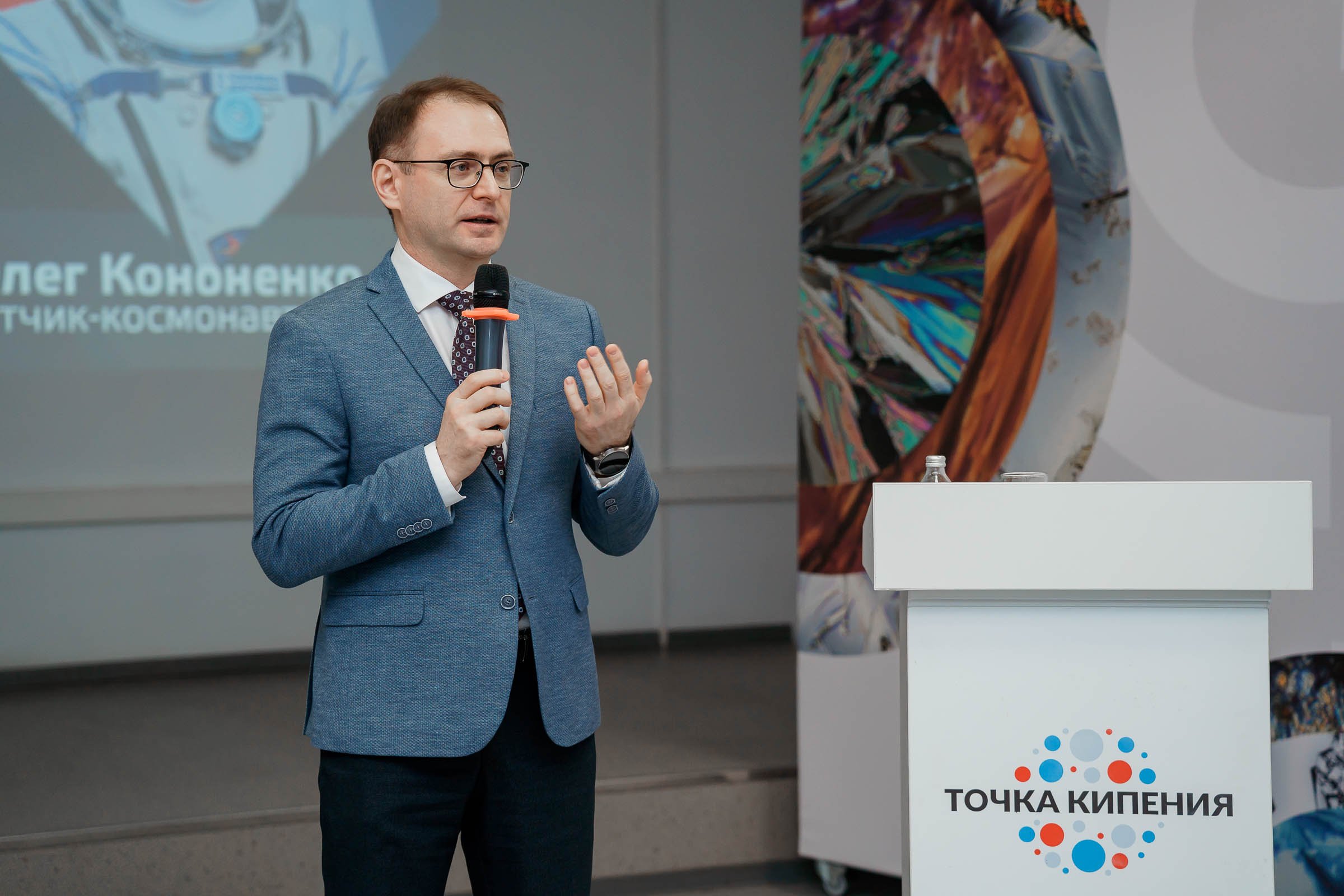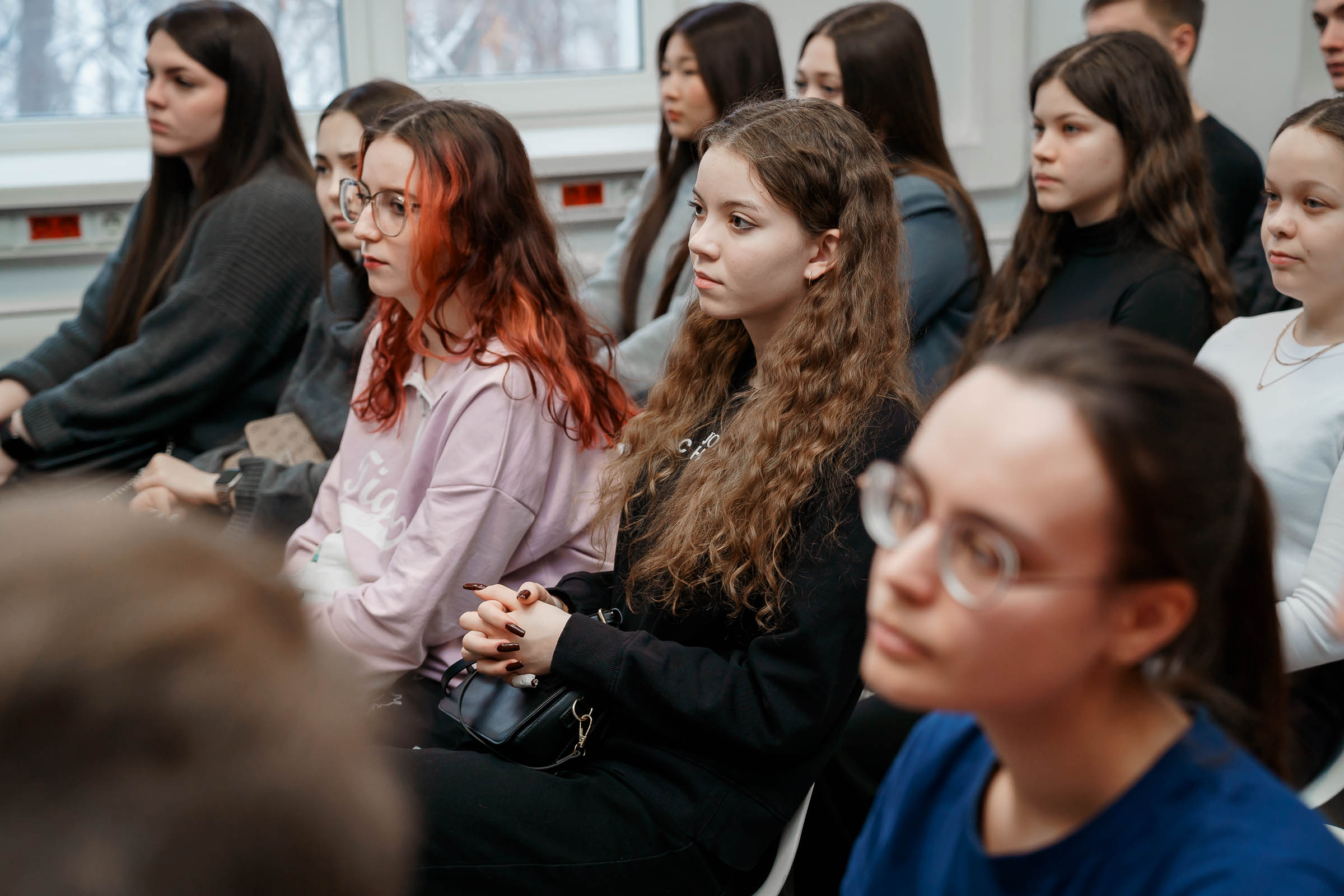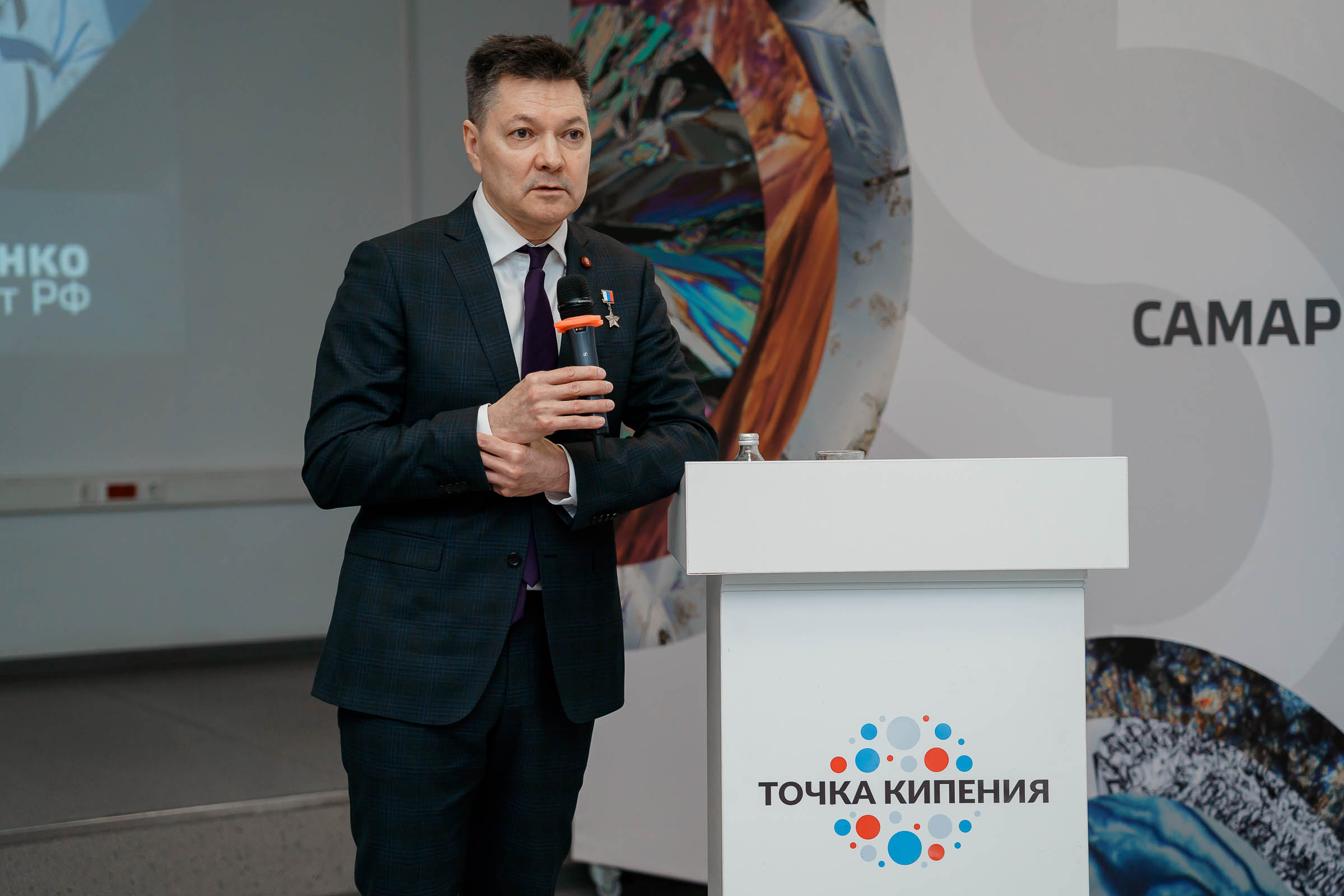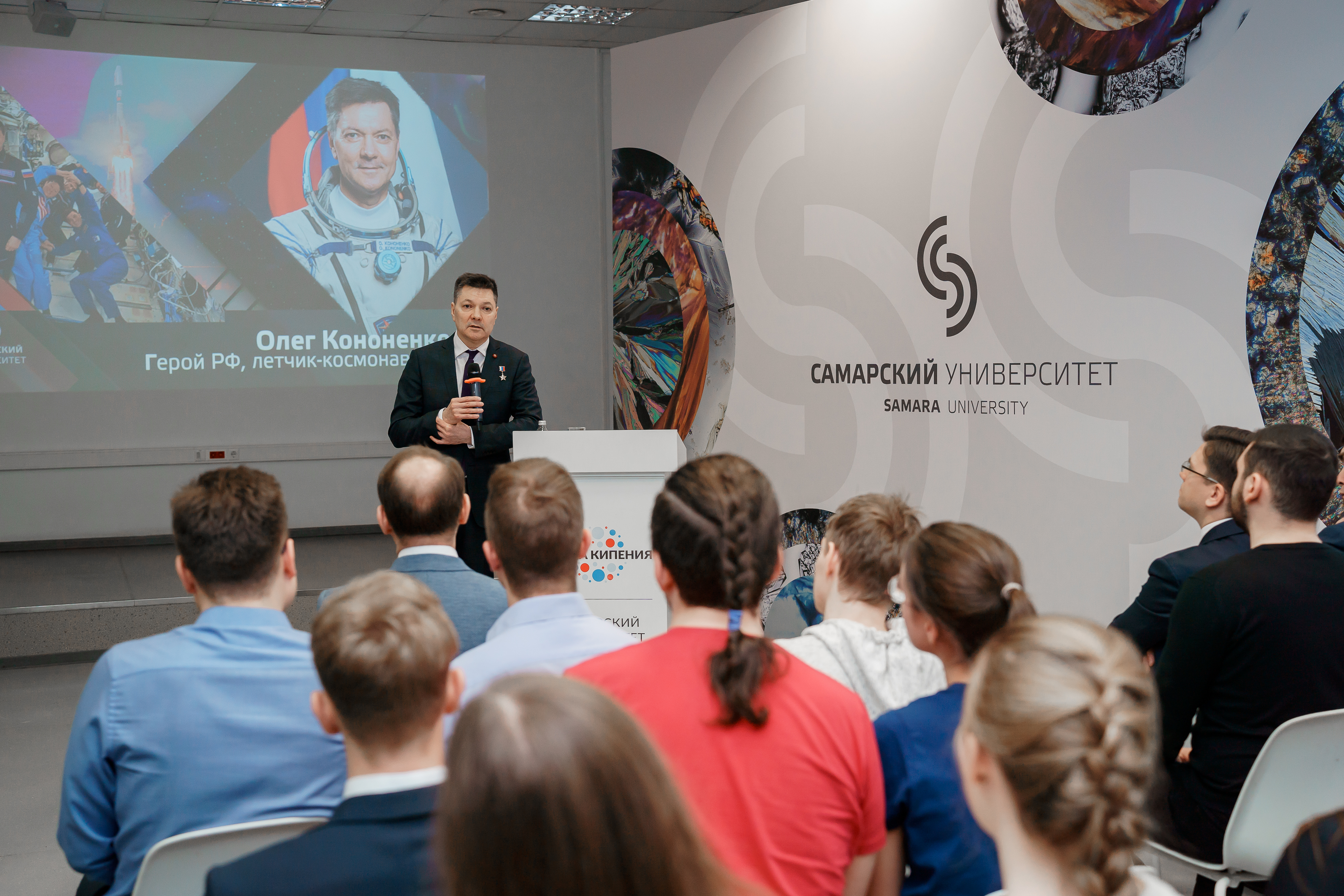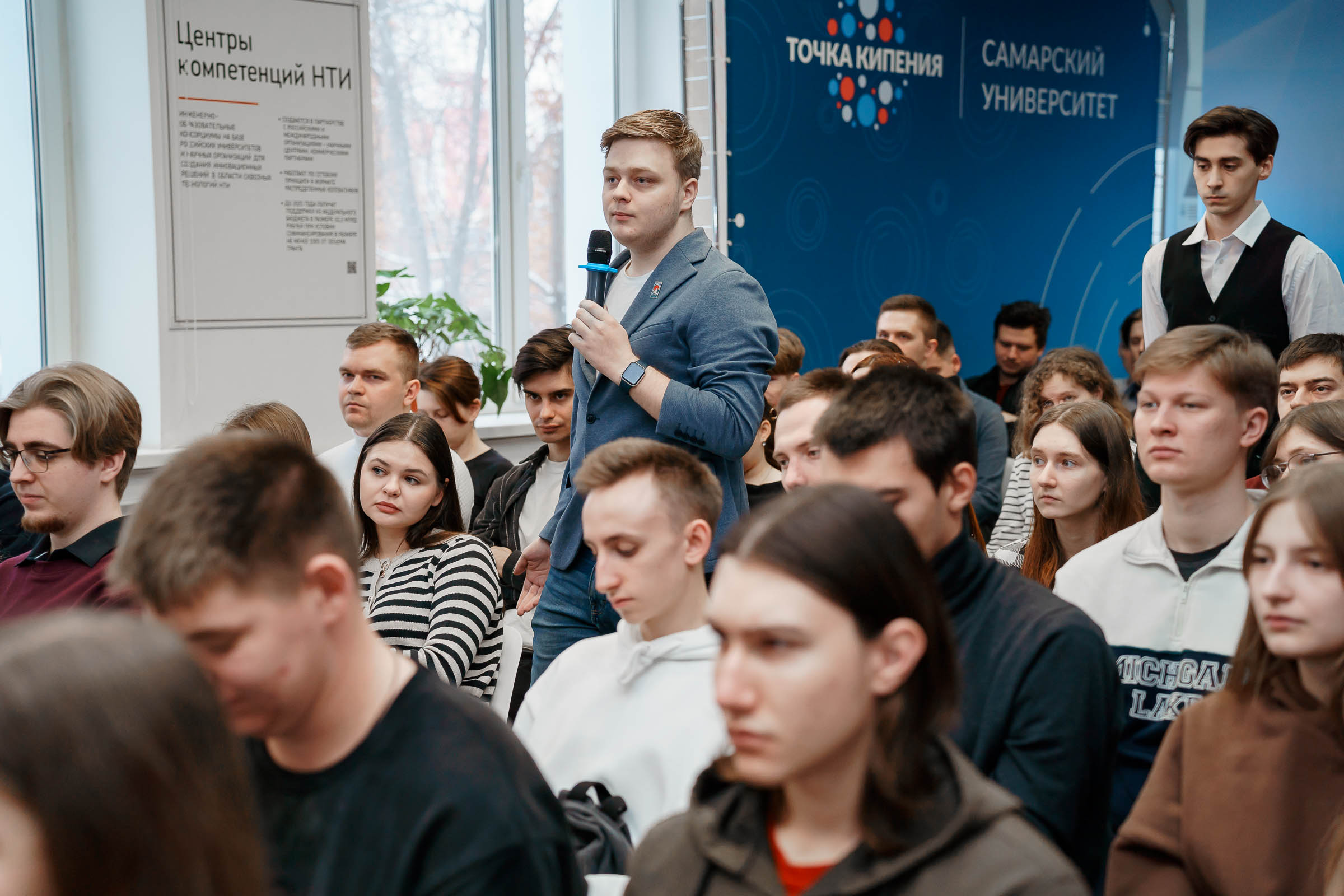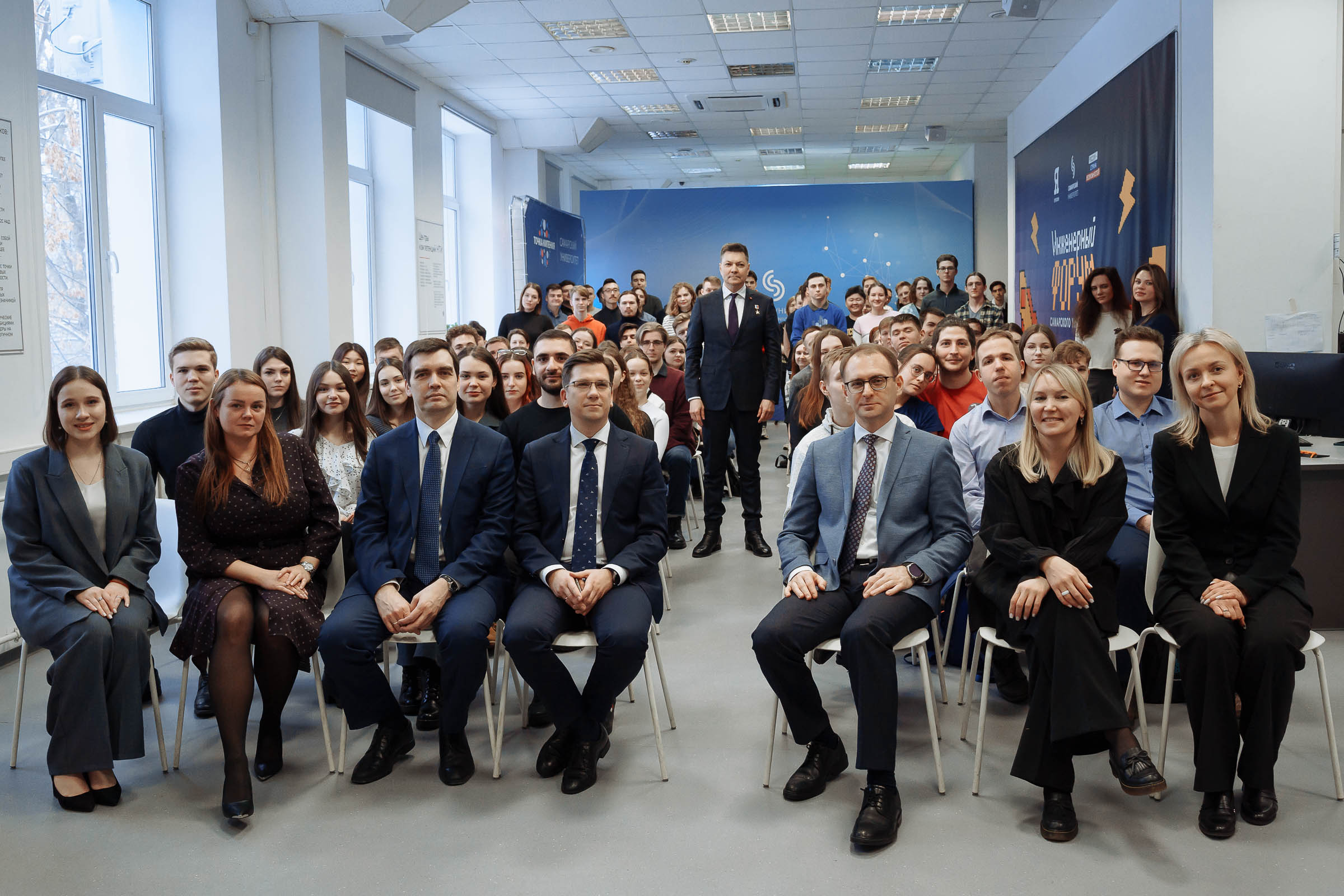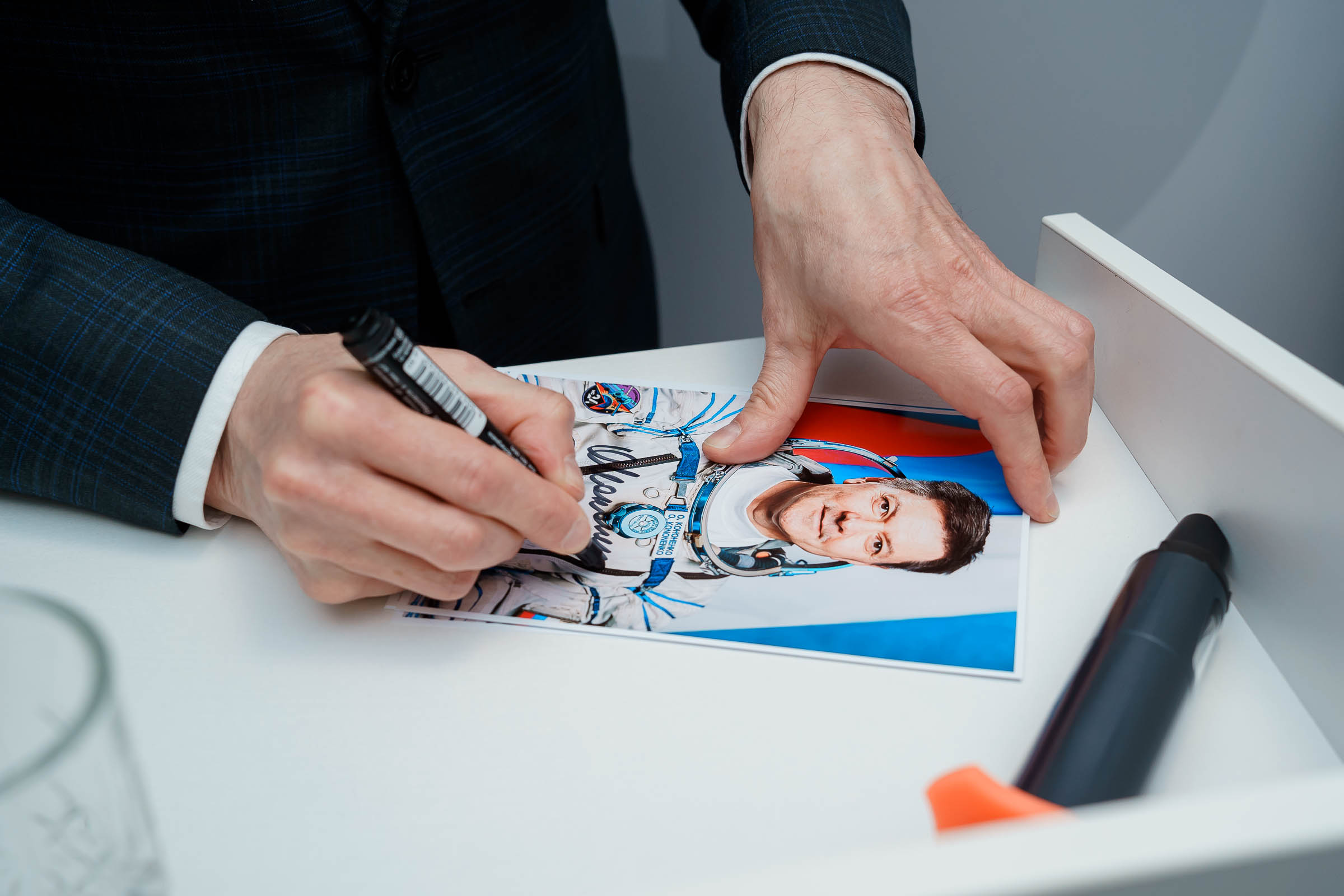What do cosmonauts thank Russian engineers for? How to “grow” a bat’s thyroid gland in orbit and why it is important for future human flights to Mars. When will the ISS (International Space Station) operation end? How will international cooperation develop at the Russian Space Station?
Samara University’s students attended prepared the meeting with the Hero of Russia, cosmonaut Oleg Kononenko, who visited Samara this week: they asked difficult questions, demonstrated knowledge of the context and the equipment.
Oleg Kononenko is a Hero of Russia, a test cosmonaut instructor, commander of the Roscosmos cosmonaut squad, and Samara University’s honorary graduate! Five flights into orbit, seven spacewalks, and the total duration of his space flights is 1,110 days, 14 hours, 58 minutes, and 43 seconds. Vladimir Bogatyrev, Rector of the University, congratulated the guest on setting the record and introduced him to the young people.
Additive manufacturing in space
Answering the students’ questions, the cosmonaut spoke about operating 3D printers in orbit. In the Russian segment, there is a printer for processing the printing of thermoplastic polymer parts in conditions of zero gravity, and then, on the Earth, these parts are tested for durability.
Oleg Kononenko used the 3D bioprinter for assembling a bat’s thyroid gland and human cartilage tissue for the first time in the world. The method of magnetic biolevitation was applied.
Mastering additive technologies in microgravity conditions is one of the most important tasks, which will allow humanity to conquer other planets. “We can’t take all the spare parts we need on such a long expedition”, noted Oleg Kononenko. “It’s hard to even predict what exactly might be needed. So additive technologies are the future of manned space exploration”.
“Mat’-Perepil”
Talking about the program of experiments, Oleg Kononenko amused the audience with a story about birds. This continued the experiment of 30 years ago, which was conducted at the MIR Station. Then quails were bred into orbit, but each of the birds turned out to have one or another mutation.
It was hypothesized that the reason for that was radiation and lack of gravity. Many years later, a new type of incubator with a centrifuge was designed. Some of the eggs were incubated in artificial gravity, rotating in the centrifuge, while other eggs were fixed on the table in conditions of no artificial gravity.
Scientists have also noticed that during incubating its chicks, their mother turns the eggs over once a day. Oleg Kononenko took on the role of the mother and regularly turned the eggs over. Certain stages of the embryo development were recorded, and the results were sent to the Earth. The purpose of the recordings was tracking at what point the mutations begin to form.
“Watching my efforts, my fellow astronauts Jasmine Mogbeli and Laurel O’Hara called me “mat’ perepil” (i.e. “mother-drunk-too-much”). No matter how I assured them that in this case they should say “mat’ perepel” (i.e. “mother quail”), the new “title” had already stauck”, smiled Oleg Kononenko.
International and national interests
The students were interested in the practice of cross-country flights and the prospects for international cooperation in the framework of the operation of the new Russian Space Station.
“The cross-country flights have been extended for another two years”, explained the cosmonaut. “Our “Soyuz” flights are stable, and the launches of American spacecrafts are also steadily postponed: the weather situation at Cape Canaveral is very difficult”. The guest stressed that the idea of the flights themselves is very good, since it allows representatives of the various segments to be on board the station.
“If it is about the Russian Space Station, negotiations on creating one of the modules together with Belarus are underway”, said Oleg Kononenko and added, “To my mind, we should build our own national station. Moreover, during the construction, we should use as much as possible our own developments and technologies”.
Thanks to the engineers!
Speaking about life in the International Space Station, Oleg Kononenko repeatedly stressed that many solutions by domestic engineers are significantly superior to their foreign counterparts.
So, American spacesuits look beautiful and consist of three parts. It is impossible to put on such a spacesuit on your own. The size of the Russian spacesuit is adjustable, and it can be used by different astronauts.
“Having spent so much time in orbit, I realized that Russian engineers’ solutions are more thoughtful in terms of operation, although I must admit that ergonomics and aesthetics of the American segment arrangement seem more elaborate”, said Oleg Kononenko.
It’s still difficult to feel at home in the ISS.
“I believe that the Russian Space Station should be designed more comfortable”, noted the cosmonaut.
Photo: Olesya Orina
 RU
RU  EN
EN  CN
CN  ES
ES 